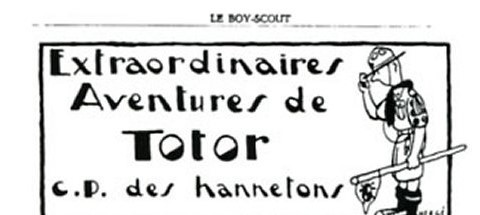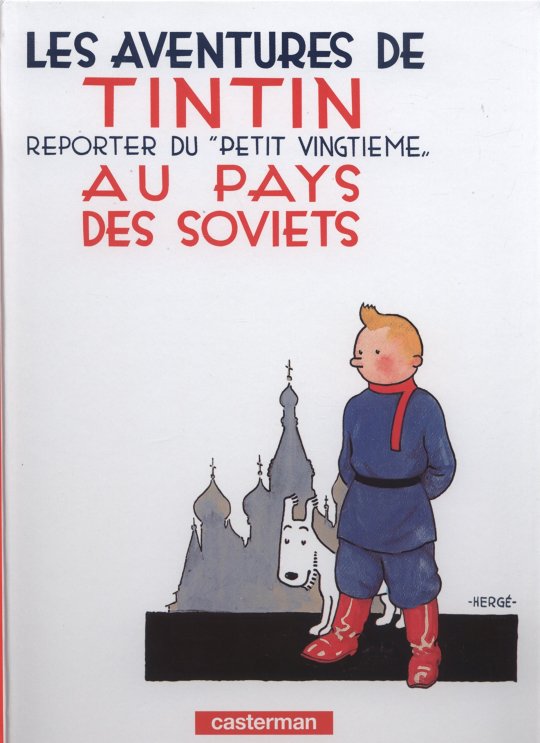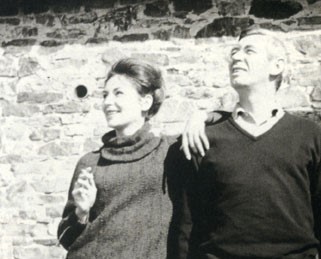#Brussels newspaper Le Petit Vingtieme
Text
Cover of Tintin skit to go under hammer
Cover of Tintin skit to go under hammer
The duvet of a Tintin story that satirised Hitler’s German expansionism might go for greater than a 350,000 euros ($395,000) when it comes up for public sale in Paris on Saturday.
In King Ottakar’s Sceptre, the boy detective’s Belgian creator Herge was taking a dig on the Nazi chief after his annexation of Austria in 1938.
Tintin and his trustworthy hound Snowy discover themselves making an…
View On WordPress
#Belgian creator Herge#Brussels newspaper Le Petit Vingtieme#Cartoon character Tintin#Comic Book#Herge#Le Petit Vingtieme#Sceptre#Tintin#Tintin comic
0 notes
Text
Biography of Hergé

Georges Prosper Remi, which we have come to call Hergé, the creator of Tintin’s world, was born to a Catholic, lower-middle-class family in Brussels, in 1907. His artistic debut started when he was a boy scout around the age of twelve when he published one of his drawings in his Boy Scout’s newsletter. After contributing for a while to this newsletter, Georges Remi settled on his pen name of Hergé, which is how one would pronounce his initials in French if they were reversed (R.G.).
In 1926, at the age of nineteen, Hergé created The Adventures of Totor for this Boy Scout newsletter, which featured the adventures of a boy scout patrol leader and his adventures to Texas.

Straight out of high-school, Hergé went to Art school briefly before dropping out because of lack of interest. Merely a year later, growing bored of a job in the subscription department of a Newspaper, Hergé enlisted in the military for a year. After finishing his duty, in 1927, the young artist secured a job as a photographic reporter at “Le Vingtieme Siecle,” (The Twentieth Century) a conservative Catholic Newspaper. Le Vingtieme Siecle was considered to be a fascist, anti-Semitic, newspaper. However, it was in 1929, at this newspaper in “Le Petit Vingtieme” (The Little Twentieth), a children’s sub-section of the newspaper, that Hergé created Tintin and Snowy, and other comics over time—such as “Quick & Flupke” and “Jo, Zette & Jocko”.

For the most part, Georges Remi was a conservative individual and his first three adventures with Tintin were largely seen to be propaganda for children. Tintin in the Land of the Soviets was seen to be anti-socialist, Tintin in the Congo was believed to push colonial beliefs (to be explored in final post), and Tintin in America was seemingly anti-capitalist.
Hergé rose to fame in the 1930s and in 1939, when German occupation of Belgium began, Georges Remi and his wife—Germaine—fled to France before finally returning a couple of months later. Until 1945, Hergé worked for “Le Soir” (The Evening) newspaper, instead of Le Vingtieme Siecle. Le Soir was a popular newspaper, however, because of German control at the time, it was under Nazi control. While working for Le Soir, Hergé created many well-known Tintin Adventures such as The Crab with the Golden Claws, The Shooting Star, The Secret of The Unicorn, Red Rackham’s Treasure, and The Seven Crystal Balls.
At the end of the war in 1944, when Belgium was liberated, Hergé was arrested because of his position at Nazi-led Le Soir and was named a collaborator. He did not spend many days in jail but was nonetheless blacklisted from the press industry and could no longer find work. A year later, a general auditor decreed that “in regard to the particularly inoffensive character of the drawings published by Remi, bringing him before a war tribunal would be inappropriate and risky,” (Assouline 2009, pp. 111-113). Hergé now knew that he would not be prosecuted, yet other co-workers of his were still on the line, some of them sentenced to death for their work at Le Soir.
By 1946, Hergé and associates launched Tintin Magazine were Hergé would provide 2-pages of work a week. This went on for a while, despite some disagreements with his co-workers from time to time. During this time, Hergé admitted having engaged in a couple extra-marital affairs, cheating on his wife Germaine—leading to the eventual end of their relationship.
Hergé’s Tintin was at its peak of popularity in the 1960s when Tintin’s Magazine was selling about 600,000 copies a week. In the years following, Hergé continued to see Fanny, one of the women he had an affair with and married her in 1977. He was of the age of 70, while she was 42 years old.

In 1983, after many years of having been diagnosed with osteomyelofibrosis (a condition that requires complete blood transfusions), Hergé passed away following a cardiac arrest. He left behind him the great legacy of 24 comic albums of The Adventures of Tintin.
#storyworlds
Sources:
Assouline, Pierre (2009). Hergé, the Man Who Created Tintin. Oxford and New York: Oxford University Press.
Sterckx, Pierre (2015). Tintin: Hergé's Masterpiece. Translated by Michael Farr. New York: Rizzoli.
1 note
·
View note
Text
Tintin backstory Headcanon 2
Tintin was actually raised by his brother Totor since he was a very small child, who for mysterious reasons never told him his real full name or why his parents disappeared. When Tintin came into his care, Totor was at first resentful of this newfound responsibility because it meant giving up on his plans for a life of adventure and becoming a parent. However, he eventually came to love his brother very much and develop a strong bond with him. When Tintin was a little older Totor trained him in skills such as hand to hand combat, survival skills, how to shoot a gun and how to drive a car along with the typical boy scout stuff, since he never got to use them himself. This is why Tintin seems so rounded in all kind of aspects such as combat and parkour.
I also think the Tintin is Trans headcanon is possible. Tintin was born female but when he was an older child he started to find out he was more of identifying as male. At first Totor just took this as a sign that he was a tomboy, but as time went by he started to realize it was something more. Because Totor had very conservative beliefs, Tintin’s gender identity drove a wedge between them and it culminated one night when they had a severe argument which lead to Tintin storming out of the house and moving out. Tintin moved into his own apartment in another area of Brussels and managed to get a job at a local newspaper called Le Petit Vingtieme.
After Tintin moved out, Totor felt terrible for not accepting his brother for who he was and not supporting him in his time of need. He also soon gained a job as a reporter but would also secretly follow Tintin around the world to make sure he was ok. In face, he was the one who helped Captain Haddock get to Tintin in the Land of Black Gold. However, he never gained the courage to approach his brother because he was still ashamed of what he did to Tintin.
5 notes
·
View notes